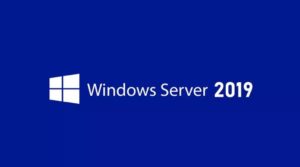 I just attended another Microsoft Windows Server 2019 event at the Microsoft Ignite conference in Florida and I am disappointed to report that Server 2019 has been described as a “nothing burger” by some of the attendees.
I just attended another Microsoft Windows Server 2019 event at the Microsoft Ignite conference in Florida and I am disappointed to report that Server 2019 has been described as a “nothing burger” by some of the attendees.
It should not come as a surprise that the 7th version of Windows Server since NT4 is little more than an iteration on its immediate predecessor, Server 2016. In fairness, there are improvements but the VAST majority of companies and IT admins, just won’t care about them.
1 – AZURE FILE SHARES:
For our clients, the most exciting new feature I have heard about is Azure limitations being massively enhanced:
- Azure file shares can now be 100TB in size
- There is an migrate to Azure utility
Both of these are Azure related and almost certainly coming to Server 2016 because Microsoft wants as much data moved into their cloud as they can get and I can’t see how the operating system makes much difference. And before you right us hate mail, I want to assure you that Microsoft has in fact promoted these AZURE changes at Windows Server 2019 events.
2 – STORAGE CLASS MEMORY:
The second most interesting feature in Server 2019 is a very cool hardware architecture change named “Storage Class Memory”. Storage Class Memory is Intel Optane DDR4 DIMM that can be partitioned into traditional RAM and PERSISTENT storage. Meaning that you can power off the server and whatever partition of the Optane memory you partitioned as persistent will not be lost, just like a hard disk. Optane is faster than an SSD and is positioned in the bus, right next to the Intel CPU, so access is fast.
Why is Storage Class Memory not Server 2019’s killer app, you ask? Well, it is because Server Class Memory requires hardware vendors like Dell, Lenovo and HPE to support it and that will not happen for months (or more). Further, when the OEM’s are ready to support it, the price of the Optane RAM will be excessively expensive.
So while we are very excited about Strorage Class Memory, it really is a 2020 technology and not likely something you will deal with in 2018 or 2019.
3 – IMPROVED CONTAINER SUPPORT:
Again, this is a big deal for a small number of Enterprise scale companies.
While I did not hear any specific claims as to the exact performance boost, it was said over and over again that Containers running under Server 2019 were much faster than than they were in Server 2016. The various presenters repeatedly said that much effort had been put into this improvement and more than one tech I spoke to about it claimed that they could validate this performance bump in their pre-release versions of Server 2019.
4 – DISK STORAGE IMPROVEMENTS:
Microsoft is able to demonstrate that given the right conditions and hardware, Windows Server 2019 disk can perform at twice the speed of Server 2016.
Further, you can now use a USB disk as a Cluster witness and there are some nice increases in the amount of disk you can have.
If you have tens of thousands of users, or a particular use case, these enhancements may provide you with some value but we think they will affect precious few real companies.
5 – VIRTUAL MACHINE GUARDED FABRIC:
The hypervisor that is required to make Virtual Machines run is an attack vector that is often referred to but seldom given much consideration by tech’s. Windows Server 2019 apparently does a better job protecting those soft targets (i.e. the virtual switch that controls communications, the memory management…) and Linux VM’s can now take advantage of this “Guarded Fabric”. VM’s can now be bound to the Trusted Platform Module (TPM) of a specific server making it virtually impossible for an IT Admin that has access to the host disks, to open / mount a VHDX file on different PC or server than the one it was assigned to. I wonder how that works for clustered VM’s?
6 – MISC IMPROVEMENTS:
Windows Server 2019 is claimed to be faster and more secure than ever… right… just like every new Windows Server version and because Server 2019 is little more than a service packed version of Windows Server 2016.
CONCLUSION:
Windows Server 2019 is clearly the choice to go to if you are running very old servers that need to be replaced or if one of these Enterprise scale features is critical to your success, but it will not convince many to pay the money to upgrade from Server 2016. If not for Microsoft’s on-premise corporate perpetual upgrade plan “Software Assurance“, very few companies would adopt this new version. Windows Server 2019 would be much more aptly named Windows Server 2016 R2, but Microsoft has stopped using the R2 nomenclature.
If you doubt our low opinion of Server 2019, just do a Google or Bing search for WHAT’S NEW IN SERVER 2019 and you will find very few articles in total and the ones you do find will be short.
Windows Server 2019 is just another reminder that Microsoft if clearly (and we think, correctly) putting its energy into Azure, Office365 and all of their other cloud products.
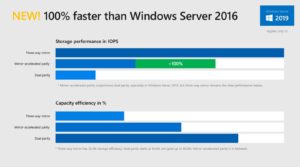
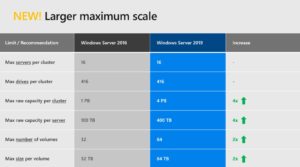
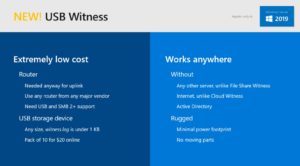
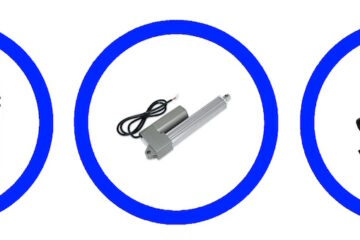


2 Comments
Learn Microsoft Azure In 1 Hour Boot Camp – Up & Running Technologies, Tech How To's [Video] - 360WiSE MEDiA · May 14, 2020 at 2:01 am
[…] video with a total run time of 50 minutes that demonstrates all of the steps required to set up a Windows Server 2019 Domain Controller, Windows 10 Virtual Machine, Azure Bastion, DHCP, DNS, Resizing, Data Center […]
FREE VIDEO: Learn Microsoft Azure In 1 Hour Boot Camp – Up & Running Technologies, Tech How To's · May 13, 2020 at 9:27 pm
[…] video with a total run time of 50 minutes that demonstrates all of the steps required to set up a Windows Server 2019 Domain Controller, Windows 10 Virtual Machine, Azure Bastion, DHCP, DNS, Resizing, Data Center […]